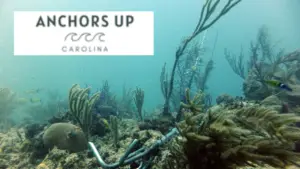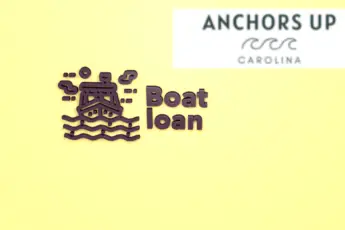One of the most beautiful sights to see as a diver or snorkeler are coral reefs along the coast of the United States. I have had the opportunity to venture out to an abundance of reefs to enjoy marine life. Without question, an exceptional amount of sea creatures live on the reef and the surrounding waters. For this reason, anglers, snorkelers, and divers alike drive boats to explore what’s below. However, in doing so, deployed anchors cause damage to delicate corals. Anchor damage coral reefs can be avoided when properly securing the vessel in the vicinity of a reef.
How Does Anchoring Cause Damage To Coral Reefs
Unquestionably, anchoring on reefs causes damage to the fragile ecosystem. There are two primary causes of anchor damage coral reefs.
Anchor Embedding In The Reef
One of the primary reasons that reefs become damaged by boaters are anchors penetrating reefs.
Without a doubt, the dragging of the anchor before it comes embedded dislodges sponges, sea fans, and corals. Unfortunately, the rate of regrowth is incredibly slow compared to how quickly destruction occurs.
In addition to dislodging fixed objects, live reefs become crushed by the impact of the anchor strike. Unfortunately, crushed corals are subject to dying. Considering the number of boaters anchoring on reefs, large sections become severely damaged or killed. For this reason, it is essential to find alternative methods compared to securing to reefs.
Anchor Chain Dragging On The Reef
In comparison, the chain is unlikely to crush corals as it impacts the reefs when dropped from above. However, anchor chains cause a wide swath of damage compared to the anchor itself.
As you know, a boat does not remain in one position when anchored. Instead, the boat swings from side to side. The swinging is caused by wind, current, boat wakes or all of the above.
When the anchor is dropped and secured, the chain between the anchor and the line drags from side to side. The dragging again pulls delicate corals, sponges, and sea fans free from the reef. I have anchored in sand and witnessed the range of drag, and it is astonishing. Imagine a six foot length of the chain and the path of destruction in coral. In shifting winds, a boat is capable of swinging 360 degrees. For this reason, it is important to avoid dropping the hook on reef systems.
Alternatives To Anchoring On Reefs
I highly suggest avoiding dropping an anchor on the reef whenever possible. To prevent reef damage, you have two options. Consider both alternatives before damaging the ecosystem below.
Mooring Balls
I highly recommend utilizing a mooring ball when they are present. The mooring ball is a guaranteed solution for preventing damage to coral reefs.
The mooring ball is permanently affixed to the seafloor below and is inspected by a governing body. Fortunately, a multitude of mooring balls are positioned over reefs therefore you are likely to find an open space when venturing out. However, not all reefs are equipped with moorings. I suggest researching mooring balls in your area, as they often provide the exact positioning.
Mooring balls are fitted with a pennant. The pennant is designed to run a bow line through and back the cleat on the vessel, thus securing the boat.
After a day of diving, snorkeling, or fishing, simply remove the bow line from the pennant and drive away.
Sand Patches
It should be noted that reefs are surrounded by large sand patches. Rather than dropping the anchor on the reef, drop the anchor in the sand. Trust me, with proper planning, the boat is still positioned over the reef with the anchor in the sand. Always drop upwind of the reef and pay out the line until the reef is below the vessel.
I know for a fact that positioning the vessel properly is a challenge compared to a mooring ball. When possible if the water is clear, glance and the seafloor below to locate sand patches. However, this is not always an option.
The alternative to sight is utilizing bottom reading equipment. When comparing a reef to a sand bottom on the screen, it is significantly different. Reefs display as jagged with changes in depth compared to a flat bottom with no undulations.
I suggest using either of these two techniques when anchoring on a reef to avoid damage.
Anchor Damage Coral Reefs: Avoid It When Possible
Look, you can’t avoid damaging a reef in all situations when anchoring. I take the opportunity to use a mooring ball or drop the hook in the sand whenever possible. However, this is not always an option depending on the situation. Limiting anchor damage coral reefs is important, so do the best you can the next time you’re on th







